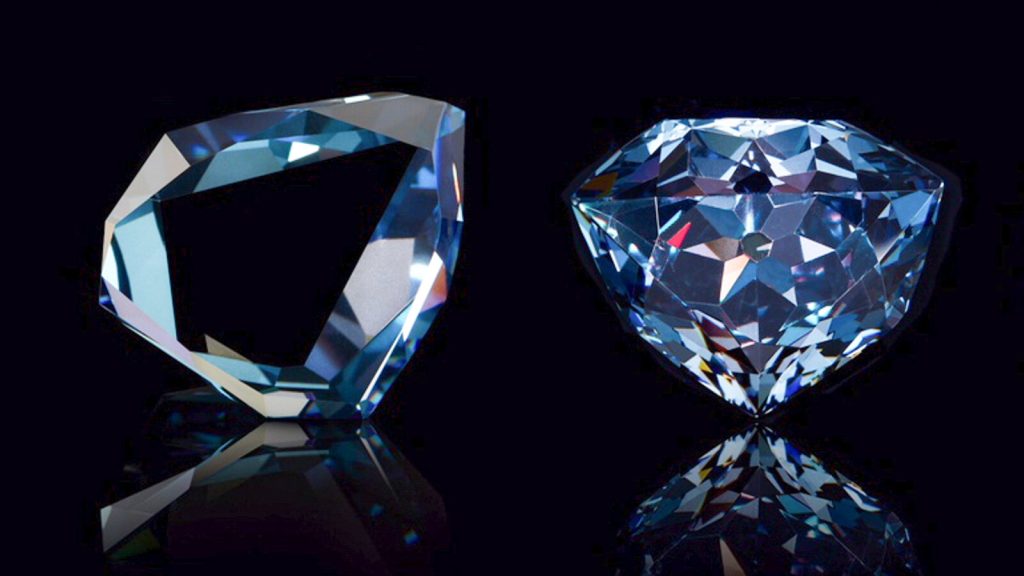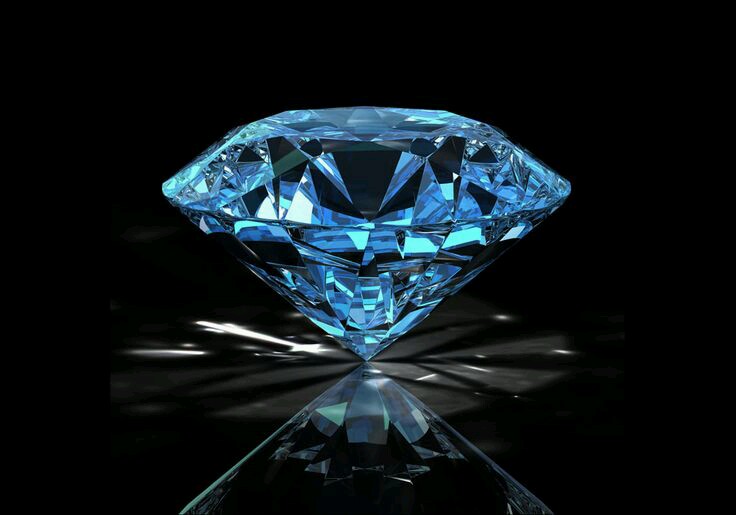Where was the Hope diamond found? You’ve probably heard the story. It was the stone owned by Louis XIV. Then, in 2009, Dr. Francois Farges found a long-lost lead cast of the stone. The project was supported by Barbara Barrett, a board member and husband of Craig Barrett. The story of the diamond is one that is reminiscent of many other historical figures, including the queens of England and France.
The Hope diamond’s history began when it was purchased from Cartier. In 1912, it cost $180,000. McLean lost her first son and daughter when they were nine. She later lost her husband and suffered a stroke, which damaged her brain. She was committed to a mental hospital. She later died. The hope diamond was in her possession when the depression hit and the family lost her fortune. The stone was discovered in a collection of jewelry she had collected from various sources. McLean often wore it and was photographed wearing it.

Where did it Originate?
While much of the amazing history of hope diamonds has taken place over the past few centuries, their origin goes back over a billion years. It then formed under tremendous pressure from deep within the earth’s crust. It was then brought to the surface by volcanic activity and lived for millions of years.
Diamonds first appeared in human history when they were discovered in a mine in India in the 17th century. The exact location is unknown, but it is most likely the Kolur Mine in Golconda. Shortly after its discovery, it fell into the hands of an itinerant French merchant named Jean-Baptiste Tavernier, who brought it to Europe.
How was it Discovered?
After its discovery, the Hope diamond entered the Smithsonian Institution’s permanent collection. It’s now housed at the Smithsonian’s National Museum of Natural History, where millions of people come to admire it. Since then, the Hope diamond has become a centerpiece of the museum’s collection and is the second most popular art piece in the world after the Mona Lisa. The story of its discovery has been a fascinating one.
Its story is as complex as its history. The Hope diamond was discovered in London around 1839. Henry Philip Hope’s son later sold the diamond, and he had his own business troubles. The hope diamond then passed through several dealers, including an American jeweler named Pierre Cartier. It was also purchased by Evalyn Walsh McLean, a Washington socialite. She used the Hope diamond as a ring and later a necklace.
Who Owned the Hope Diamond?
Perhaps the most interesting factor in the history of diamonds is the number of famous historical figures who have owned them. The day Tavernier sold it, Hope Diamond became famous for the character’s fame and wealth, and the way the two characters switched hands.
A Royal Heirloom
When the diamonds were bought in Tavernier in 1668, the first person to purchase them was King Louis XIV of France. A very wealthy and magnificent ruler, Louis refined diamonds to make them one of the crown jewels.
After the death of Louis, the diamonds passed to his sons and grandsons, eventually to Louis XVI. This Louis was beheaded along with his wife Marie Antoinette during the French Revolution. The subsequent looting of the royal treasures resulted in the loss of the diamonds over the years.
When it reappeared in 1812, the diamond was in the hands of a London-based diamond dealer named Daniel Eliasson. He eventually sold it to another king, this time George IV of England.
Stories
While the Hope Diamond is now a museum piece, there are many stories about the Hope Diamond. The first story attributed the thief who stole the Hope Diamond to drowning, and another one claims that his son, Selim Habib, was a king. The second story blames another Selim Habib, who died in Moscow in 1689. The current owner, Evalyn Walsh McLean, believes that the Hope Diamond’s bad luck has been a blessing in his life.
The Hope Diamond was purchased by Evalyn Hope. She brought it to a church for a blessing, although she didn’t believe in curses. However, May Yohe, the ex-wife of Thomas Hope, warned her against buying the Hope diamond. She was spooked by the warning. The two met at the church of Russel Monseigneur, where lightning rained on the church building.
The Hope Diamond may have originated in a mine in India. Jean Baptiste Tavernier sold the stone to King Louis XIV in 1668, and he named it the Tavernier Blue. Tavernier described the Hope Diamond’s color as “a beautiful violet.” However, the source of the Hope Diamond remains a mystery, with many claiming that it was stolen from an Indian idol. The Hope Diamond later became a symbol of royalty and was used by King Louis XIV of France in his Order of the Golden Fleece pendant.
A Family Name
After George’s death, these diamonds were sold to pay off debts during his reign, and in 1839 passed into the hands of the famous collector Henry Philip Hope.
After Hope’s death, the diamonds were passed on to his nephew Henry Thomas and then to Sir Francis Hope, Henry Thomas’ grandson. When Sir Francis finally sold it in 1901 to pay off his debts, he was taken on bail. Sir Francis sold it to a local dealer in London, Joseph Frankels in New York, and Selim Habib sold it to S.H. Rosenov.
The Hope Diamond was purchased by Evalyn Walsh McLean, a woman from Washington, D.C. McLean wore the Hope diamond around her Great Dane, Mike. In 1947, the diamond was sold to Harry Winston, who hoped to share it with the public. The hope diamond became a pendant on a diamond necklace. McLean owned the Hope Diamond until 1947. The Hope Diamond toured the court of jewels, raising funds for local good causes.
History of Hope Diamonds
The Hope Diamond’s history is not well-documented. It was acquired by Henry Philip Hope in 1830. His nephew, Henry Thomas Hope, took the name of the Hope family. When he died in 1884, he left the estate and the Hope Diamond. The Hope diamond eventually passed to Francis Pelham Clinton. The two had a son who took his mother’s name, and the diamond was given to him. Later, Lord Francis Hope took the name “Hope.”
Despite the incredible value of the Hope Diamond, the owner was bankrupt. He sought permission to sell the diamond to pay off debts. In 1901, he eventually got approval from the House of Lords. In the following decade, the Hope diamond was sold to a New York dealer, a Turkish diplomat, a French diamond expert, and an American jeweler named Pierre Cartier. These buyers gave the Hope diamond a high price and the title of nobility.
A Social Symbol
Rosenau eventually sold the jewelry to Pierre Cartier, a well-known Parisian jeweler. Cartier was not interested in selling diamonds to other dealers but instead turned to America’s wealthy socialites. He found the perfect target in Evalyn Walsh McLean, a billionaire heiress who is actually a gold miner.
McLean was fascinated by diamonds and other jewelry, and Cartier tried to sell him the Hope diamonds. After several unsuccessful attempts, he managed to convince her by leaving the diamond in her hand for a week-long enough to take it. After a long and frustrating process, McLean finally bought the diamond in 1911 and kept it for life.
When McLean died in 1949, the wealthy American jeweler Harry Winston bought the diamonds. After less than ten years of showing diamonds in the United States, he generously donated the stone to the Smithsonian Institution in 1958.
Why is it so Special?
Much of the value of the Hope Diamond comes from its extraordinary history and the extraordinary people who have owned it for centuries. But it’s not just history that adds value. It didn’t have a history when it was eventually sold to Louis XIV, but it was definitely worth it, attracting men who wanted to be one. Exquisite. Sun King.
The most obvious source of a diamond’s value is beauty. Covered with numerous layers, it retains its dark blue color over time. This is due to the trace content of pine in the stone. It is also classified as a Type IIb diamond, the rarest natural diamond that has very low levels of nitrogen impurities and phosphorescence, and glows red when exposed to ultraviolet light.
Natural blue diamonds are very rare and most of them are not as strong and large as hop diamonds. At 45.52 carats, this is the largest known blue diamond after numerous claims. In its original form, it was fixed at 112 carats.
Finally, diamonds carry an element of intrigue due to the misfortune they bring. As with Tutankhamun’s tomb, many associated with him were unfortunate enough to learn of Louis XVI’s execution. Until Evelyn McLean’s children die. Even figures such as McLean himself were partly drawn to diamonds because of these stories.
Where is it Today?
The Hope Diamond has been owned by the Smithsonian since it was given as a gift by Harry Winston. It is in the Smithsonian National Museum of Natural History in Washington, DC, at the top of the jewelry collection. It locks securely into the display case and slowly rotates the pedestal for visitors to see and admire.
Conclusion
In December 1988, a team from the Gemological Institute of America visited the Smithsonian Institution to evaluate the Great Blue Stone using modern technology. They noted that the gem showed signs of wear, very high levels of phosphorescence, and a slight loss of clarity due to the whitish sand commonly found in blue diamonds. They describe the color as a chic dark grey-blue.
An Examination by another gemologist on the same day, using a high sensitivity colorimeter, showed that the deep blue had a very bright violet component, invisible to the naked eye. Surprisingly, however, the original 112 3/16 carat stone purchased from Tavernier was called “un beau violet” (beautiful violet).







